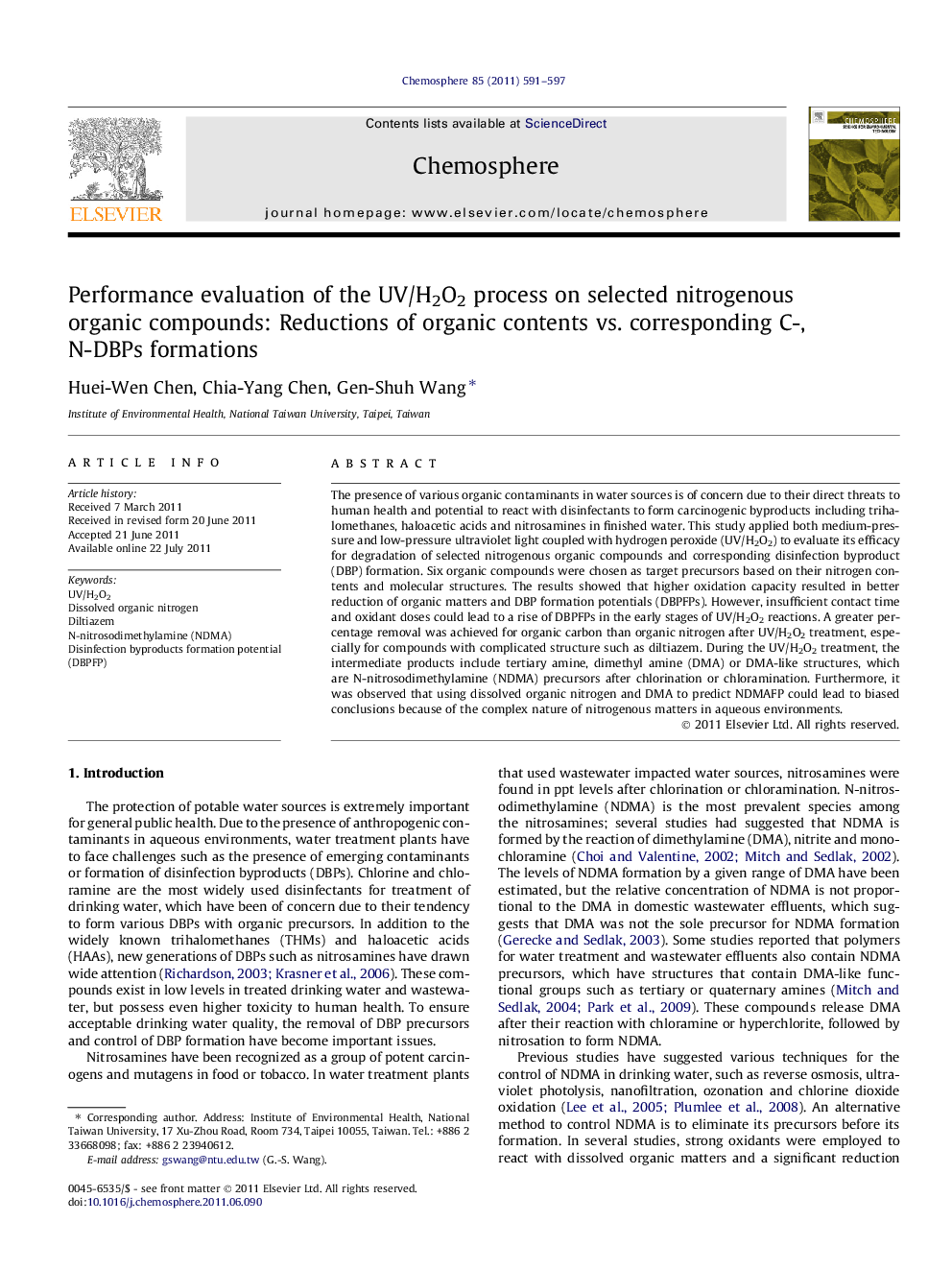| کد مقاله | کد نشریه | سال انتشار | مقاله انگلیسی | نسخه تمام متن |
|---|---|---|---|---|
| 4410583 | 1307554 | 2011 | 7 صفحه PDF | دانلود رایگان |

The presence of various organic contaminants in water sources is of concern due to their direct threats to human health and potential to react with disinfectants to form carcinogenic byproducts including trihalomethanes, haloacetic acids and nitrosamines in finished water. This study applied both medium-pressure and low-pressure ultraviolet light coupled with hydrogen peroxide (UV/H2O2) to evaluate its efficacy for degradation of selected nitrogenous organic compounds and corresponding disinfection byproduct (DBP) formation. Six organic compounds were chosen as target precursors based on their nitrogen contents and molecular structures. The results showed that higher oxidation capacity resulted in better reduction of organic matters and DBP formation potentials (DBPFPs). However, insufficient contact time and oxidant doses could lead to a rise of DBPFPs in the early stages of UV/H2O2 reactions. A greater percentage removal was achieved for organic carbon than organic nitrogen after UV/H2O2 treatment, especially for compounds with complicated structure such as diltiazem. During the UV/H2O2 treatment, the intermediate products include tertiary amine, dimethyl amine (DMA) or DMA-like structures, which are N-nitrosodimethylamine (NDMA) precursors after chlorination or chloramination. Furthermore, it was observed that using dissolved organic nitrogen and DMA to predict NDMAFP could lead to biased conclusions because of the complex nature of nitrogenous matters in aqueous environments.
► Degradation efficiency of nitrogenous organic compounds was assessed with UV/H2O2.
► Higher oxidation power resulted in better reduction of organic matters and DBPFPs.
► A rise of DBPFPs was observed when contact time of UV/H2O2 was not enough.
► Higher removal was found for organic carbon than organic nitrogen after AOP treatment.
► Using DON and DMA to predict NDMA may be biased for complex nitrogenous organics.
Journal: Chemosphere - Volume 85, Issue 4, October 2011, Pages 591–597